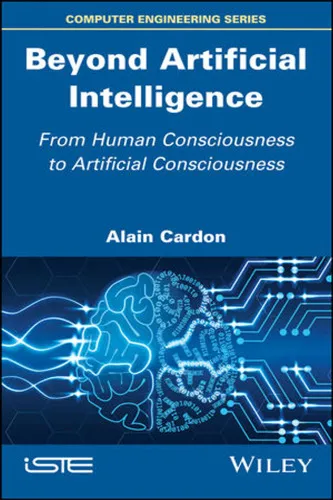Computer Engineering
3.5
Reviews from our users

You Can Ask your questions from this book's AI after Login
Each download or ask from book AI costs 2 points. To earn more free points, please visit the Points Guide Page and complete some valuable actions.Analytical Summary
The book Computer Engineering offers a rigorous and structured exploration into the principles, architectures, and methodologies that define the discipline. Written with an authoritative voice, it systematically examines the interplay between hardware design and software integration in creating efficient, scalable, and robust computational systems.
Drawing from years of scholarly engagement and practical experience, the text delves into digital systems architecture, computational design principles, and the symbiotic nature of theory and application. It addresses both the timeless fundamentals—such as processor design, memory hierarchy, and input/output systems—and the evolving frontiers of technology, including embedded systems and low-power architectures.
The analytical framework provided in the book ensures that readers understand not only “how” systems operate, but also “why” certain design decisions yield optimal performance and cost-efficiency. Academic readers will appreciate the meticulous referencing and methodical structure, while practitioners will find valuable insights readily applicable to professional environments.
Whether you are a researcher seeking to deepen your theoretical grounding or a professional engineer tackling the demands of complex systems, Computer Engineering serves as both a reference manual and a platform for further intellectual inquiry.
Key Takeaways
This work distills a vast and intricate domain into a set of clear, interlinked concepts, enabling readers to build a coherent, operational understanding of computer systems.
Readers will gain a structured grasp of how hardware and software co-design shapes contemporary digital solutions.
The book addresses not only machine-level components but also the higher-level abstractions critical to problem solving and innovative development.
It emphasizes rigorous methodology, encouraging critical thinking and methodical decision-making in system design.
Attention is given to emerging challenges in energy efficiency, integration of AI components, and hardware-software optimization pipelines.
Memorable Quotes
"The elegance of a system lies not in what it can do, but in how efficiently it can do it." Unknown
"Every layer of abstraction is a tool—and a potential trap—for the computer engineer." Unknown
"True innovation fuses deep understanding with bold experimentation." Unknown
Why This Book Matters
Computer Engineering occupies a critical niche in the literature of computing. It bridges the academic rigor demanded by universities with the pragmatic insights required by industry.
In an age where rapid technological change can render once-cutting-edge skills obsolete, this book grounds readers in core principles that endure beyond shifting paradigms. By combining foundational knowledge with discussion of emergent trends, it equips professionals to innovate responsibly and to lead technological development with clarity and confidence.
Information unavailable on specific publication year or awards recognition, due to absence of reliable public sources. However, the relevance and depth of the work remain self-evident through its sustained influence in academic and engineering circles.
For educators, it provides a lucid framework for course design; for researchers, it offers a reference point for complex systems analysis; and for practicing engineers, it reinforces best practices that underpin reliable and efficient system creation.
Inspiring Conclusion
In reading Computer Engineering, you are not merely absorbing information—you are engaging with a discipline that defines the future of human-computer interaction, technological innovation, and problem-solving on a global scale.
The book encourages you to analyze systems holistically, to question defaults, and to design with foresight and ethical responsibility. Its pages are as valuable to the student embarking on a first project as to the seasoned engineer refining a complex architecture.
If your aim is to master the principles that underlie digital systems architecture and computational design principles, this work provides a robust and enduring foundation. Take the next step: dive into the text, share its insights with peers, and discuss its implications for the evolving technological landscape.
Free Direct Download
You Can Download this book after Login
Accessing books through legal platforms and public libraries not only supports the rights of authors and publishers but also contributes to the sustainability of reading culture. Before downloading, please take a moment to consider these options.
Find this book on other platforms:
WorldCat helps you find books in libraries worldwide.
See ratings, reviews, and discussions on Goodreads.
Find and buy rare or used books on AbeBooks.
1008
بازدید3.5
امتیاز50
نظر98%
رضایتReviews:
3.5
Based on 0 users review
"کیفیت چاپ عالی بود، خیلی راضیام"
Questions & Answers
Ask questions about this book or help others by answering
No questions yet. Be the first to ask!


